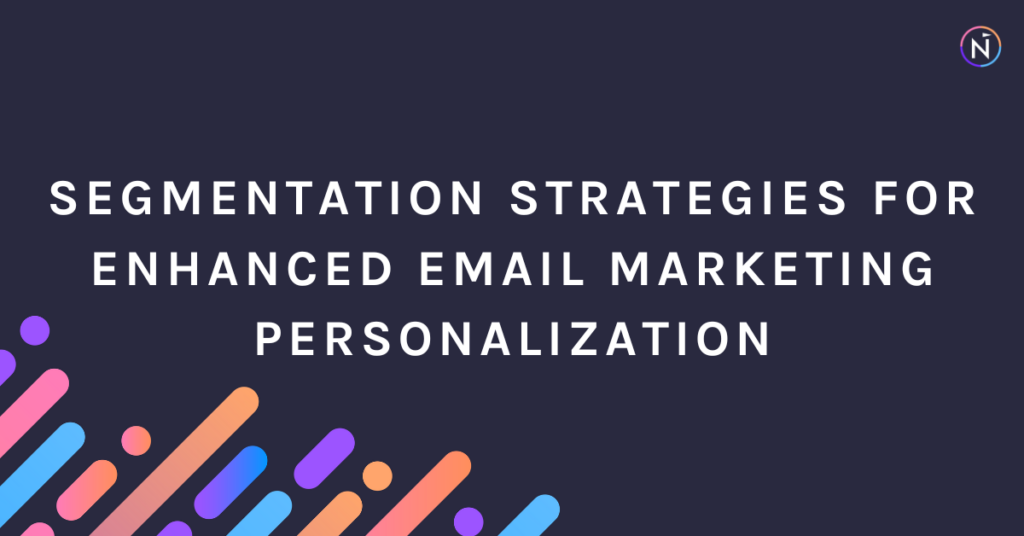In the age of information overload, personalization isn’t just a nice touch; it’s imperative! As consumers are bombarded with countless marketing messages daily, email campaigns that aren’t tailored to the recipient’s interests or behaviors can quickly become noise.
And as we all know, noisy emails are often doomed to the dreaded ‘unsubscribe’ click or, worse, the spam folder.
The solution? Segmentation.
Segmentation allows you to target specific subsets of your email list based on shared characteristics or behaviors. By delivering tailored content that addresses the unique needs and interests of these segments, you boost engagement, increase conversion rates, and build stronger relationships with your audience.
Let’s dive into the top strategies for effective email segmentation and personalization.

1. Demographic Segmentation
When in doubt, start simple!
Demographic data such as age, gender, location, or occupation can offer immediate insights into what content might resonate best.
For instance, a clothing retailer might send winter coat promotions to subscribers in colder climates while showcasing swimwear to those in tropical regions.
If you’re struggling with how to best implement segmentation into your marketing efforts, demographic segmentation is a great place to start!
2. Behavioral Segmentation
Give the people what they want based on their previous activity.
Track how subscribers interact with your website and emails. Segments can be created based on purchase history, browsing behavior, email open rates, and more.
As you may already know, segmentation is the backbone of the Net-Results platform! To learn how segments work and how to build segments in Goldilocks by Net-Results, click here.
A customer who frequently buys skincare products, for instance, would likely appreciate emails about new skincare launches or skincare tips. It seems pretty common sense, but you’d be surprised how many marketing departments fail to segment on these crucial behaviors.
3. Lifecycle Stage Segmentation
Where is your customer in their buyer’s journey?
A new subscriber might benefit from introductory content about your brand, while a long-time customer might be more interested in loyalty rewards or advanced product features.
Need a refresher on your businesses unique Customer Journey? Download these free Customer Journey Worksheets to better understand your customer’s buying journey.
4. Purchase History
Work smarter, not harder! Leverage past purchases to predict future buying behavior.
For instance, a customer who’s bought a baby crib might be interested in baby toys or clothes in the subsequent months.
Again, sounds basic, but it works! People want relevant, personalized content. There’s no better way to provide them with it than segmentation.
5. Email Engagement
What’s another great idea to achieve personalization via segmentation?
Segment users based on their interaction with your emails.
High engagers can be targeted with more frequent emails, while low engagers might need a re-engagement campaign or a different content strategy.
Meet customers and prospects where they are—don’t force them to sift through hundreds of emails from you if they never seemed that jazzed about the idea of email marketing in the first place.
In today’s competitive digital landscape, generic email campaigns no longer cut it. Customers expect (and frankly, deserve) more than a one-size-fits-all approach. By implementing segmentation strategies, marketers can deliver personalized content that resonates with each subscriber, turning emails from mere messages into meaningful interactions.
While segmentation might seem daunting at first, the return on investment in terms of engagement and conversions makes it well worth the effort. Looking for an easy way to break into segmentation?
Start with the basic demographic data you have, and then gradually incorporate more advanced behavioral and engagement metrics. Before you know it, your emails will be hitting the mark every time, delighting subscribers and driving results for your business.
Now, if you’re in the market to purchase marketing automation (a necessary tool for effective segmentation), consider scheduling a Discovery Call with our team to learn how Net-Results Marketing Automation can help you achieve continual marketing success. This quick, non-committal call will help you make the best choice for your future marketing efforts.
We look forward to hearing from you!
To your success,
Lexie Robbins
Marketing @ Net-Results

